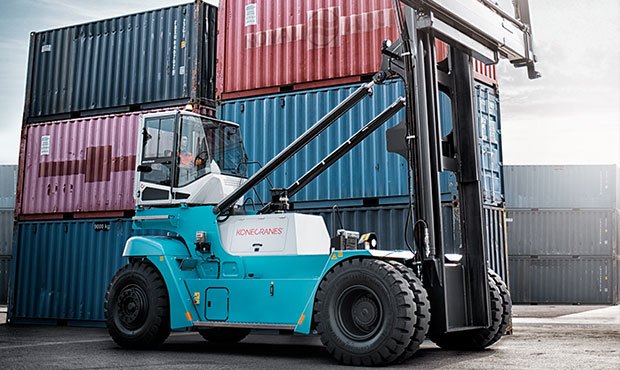Want to Learn More About Our New Container Handlers?
Reach out to our team today!
In the market for a new container handler? Look no further than Leavitt Machinery. With a wide selection of loaded and unloaded container handlers, we can help you find the perfect unit for your operation. Our lineup includes models from leading brands including Taylor and Konecranes. This ensures that you’re getting high-end performance and reliable quality. We also offer a variety of attachments including gantry spreaders, tool carriers, and stacking spreaders, allowing you to handle oversized containers with ease. Contact our team today for more information on our container forklift lineup.
Leavitt Machinery is a leading provider a high-quality material handling equipment, parts, service, and training solutions. This allows us to serve as your one-stop-shop for all your equipment needs. Our team will partner with you to understand your site requirements, project timeline/schedule, and budget. We’ll then use this information to provide you with a tailored solution designed to optimize performance, safety, and value.

Reach out to our team today!
Though some standard forklifts can, in theory, lift a container, they are not the best choice for the job. For stacking and retrieving containers, a dedicated container handler or container forklift is the ideal choice. Despite many similarities in appearance, there are several key differences between a container handler and a conventional forklift. It is these differences that make a container handler well-suited for container transportation.
The first major difference is seen when looking at how each unit lifts a load. A conventional forklift utilizes forks that are placed under an object to lift it and place it as needed. Container forklifts use a clamp-based system that latches onto the side or top of a container.
Due to this top-loading system, container handler cabs are often located higher than those on a conventional forklift to maintain visibility. These cabs are also located at the back of the unit while most forklift cabs are located right behind the mast.
Additional differences can be found in on-board systems, technology, and unique cab specifications. These aspects tend to vary based on the make and model, however. For more information on the differences between a conventional forklift and a container handler, contact our team!
This depends on the type of containers you primarily handle and the amount of space you have. For handling loaded containers, you’ll need a loaded container handler. For completely empty containers, an empty container handler is the best choice. If your yard needs to create higher stacks of containers, an empty container handler is better than a loaded model. This is due to their higher stacking capabilities. For yards that transport loaded containers from trains or ships on to a trailer, a loaded container handler is an ideal solution. In some specific job sites or intermodal yards, a combination of loaded and empty container handlers may be required.
For more information on our selection of loaded container handlers and empty container handlers, contact our team! We’ll work with you to provide the ideal unit(s) for your site requirements, budget, and operating schedule.